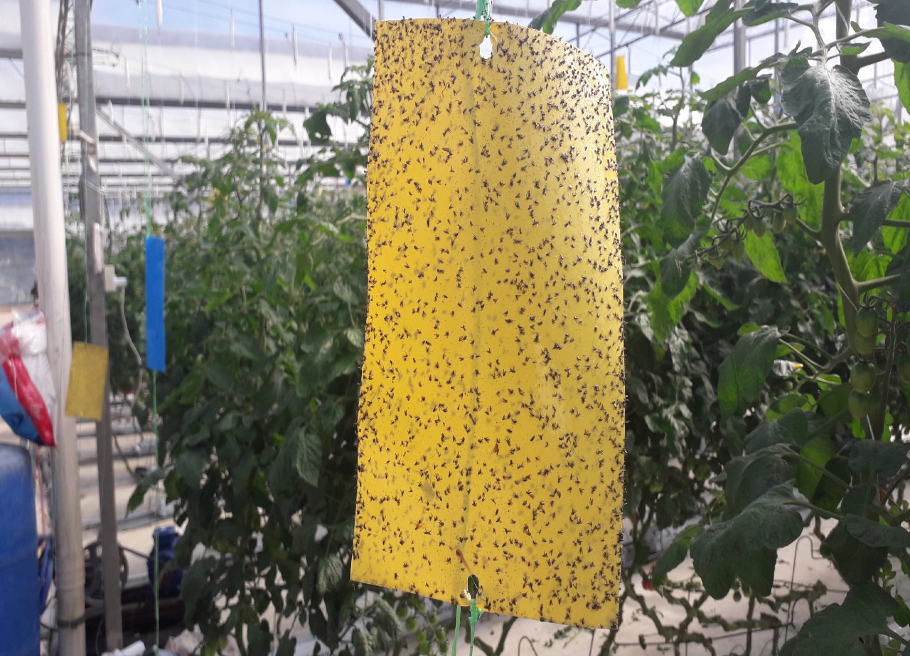Getting Your Employees to Give a %$&# About Food Safety Training
By Lute Atieh
If your employees are reading Standard Operating Procedures and enduring death by PowerPoint for their new hire training or, even worse, watching outdated videos that don’t pertain to their position or the type of plant they work in, how do we expect them to pay attention to food safety training?
“Research and conventional wisdom both suggest that employees get about 90 days to prove themselves in a new job,” wrote Talya N Bauer, Ph.D., in the report Onboarding New Employees: Maximizing Success, issued by the Society for HR Management. “The faster new hires feel welcome and prepared for their jobs, the faster they will be able to successfully contribute to the firm’s mission.”
Gone are the days of occasionally adding a slide or two to an already painful presentation as new regulations emerge. Effective training requires an investment, and doing the minimum to comply with training requirements is no longer enough because people forget up to 70 percent of what they learn. If you work for a company lucky enough to have a full-time training department, or you’re a one-person show, you can still learn new tricks. Invest in voiceovers in multiple languages, creative animation, and use more video from your plant floor.
The faster new hires feel welcome and prepared for their jobs, the faster they will be able to successfully contribute to the firm’s mission.
For those with minimal resources, it’s time to make a case to leadership on the return the company can get from an investment in training that contains industry-standard safety content and plant-specific training videos.
After visiting dozens of food processing plants over the past few years, here’s a list of the most impactful things we’ve helped with, some of which can be deployed quickly.
1. Centralize, Centralize, Centralize: Regardless of department, all training records should be kept in one place, and ideally, they’re kept digitally in a Learning Management System (LMS). This could require scanning paper logs from in-person training, or asking employees to log their training acknowledgments electronically.
2. Go Digital: Replace as much of your in-person content with digital training modules. There are dozens of online publishers, like WorkForge, that keep food safety content up-to-date at a fraction of the cost it would take companies to update the materials themselves. Other options, like the Safe-Food Training Hub, and Intertek Alchemy’s Zosi Platform, also offer a variety of food safety and workplace trainings. The bottom line: the time you spend talking with your employees should be spent on relationship building, not reading a PowerPoint.
3. Make Your Own Content. Use a smartphone, film short clips, and have those clips voiced by a professional.
4. Reading and Language Challenges: Many of your frontline employees likely struggle to read well, stay focused on reading, or English may not be their native language. Narrate as many training modules as you can, and convert those PowerPoints to videos. Outsource the voiceover of foreign languages, or use local resources such as colleges and universities for translation. Sites like fiverr.com and upwork.com are also good places to find translation and voiceover services. Nothing shows a lack of investment more than forcing your non-native English speakers to sit through an English-only training session.
5. Training Fatigue: Try dividing new hire training into two or three parts. Hold a 2-hour session, then get employees back onto the floor to observe in real-time. Then, meet up the next day for another 2-hour training. Once they can start on their line, bring them back in a week or two to answer questions, refresh critical concepts, and share information like benefits they qualify for after the first few weeks of employment.
6. Being Audit Ready & Liability Management: Delivering five hours of PowerPoints and asking your employees to sign an acknowledgment is no longer good enough. You must provide them with more engaging content, quizzes, and companies should house course completion records in an audit-ready Learning Management System (LMS). According to Harvard Business Review, 70 percent of employees report that they do not have mastery of the skills they need to do their jobs. This is why creating engaging audio and video-based training and leveraging a proper LMS is essential. Good training – and the documents to back it up – can drastically reduce a company’s liability.
7. Relationship Building: When your employees see you trying to meet them where they are by accommodating how they learn, you start to build trust. Training someone is hard and expecting them to learn without an established relationship first makes it almost impossible. Look for ways to engage your employees. This gets easier when you break up orientation and build in relationship building. You can also shorten training time with videos and increase conversational time.
8. Regularly Audit Your Onboarding & Training Programs: The fastest way to assess what needs to be improved is to order an external audit of your training programs. Sometimes a fresh look from an independent third party is the best course of action. If you are struggling to convince your leadership team to invest in food safety training, an audit can go a long way in convincing them before a major incident damages the company.
9. Consolidate Training Modules: If you use more than one Learning Management System (LMS) because content vendors require you to use their portal, consider switching to content providers that are SCORM-friendly. Several content providers will allow you to consolidate all your training products from various vendors into one universal LMS. Invest in Single Sign-On and remove additional obstacles to training.
10. Purchase a Bank of Tablets: You can now get an iPad for $240. Add a hard case and a keyboard, and you’ve got yourself a training station for under $350. This will help you convert your content from a one-to-many model to a one-to-one model. In addition, introducing different languages and line-specific videos get easier when tablets and headphones are introduced.
Stay ahead with the latest in Food Safety! Free subscription, unlimited access. Sign up now!
About the author:
Lute Atieh is one of the founders and Director of Business Development with WorkForge (formerly Valor Manufacturing Training). He has over 20 years of experience in higher education and training and was co-founder of the first 100 percent online school to be approved and accredited in Missouri. WorkForge aims to strengthen American manufacturing and our communities by providing engaging digital workforce development solutions.

-
 FeaturedRisk management
The Cost of a Breach: What a Cyberattack Could Mean for Food Safety Recalls
FeaturedRisk management
The Cost of a Breach: What a Cyberattack Could Mean for Food Safety Recalls
-
 FeaturedRisk management
Securing the Food Chain: How ISO/IEC 27001 Strengthens Cybersecurity
FeaturedRisk management
Securing the Food Chain: How ISO/IEC 27001 Strengthens Cybersecurity
-
 FeaturedRisk management
Revolutionizing Food Safety Training: Breaking Out of the “Check-the-Box” Mentality
FeaturedRisk management
Revolutionizing Food Safety Training: Breaking Out of the “Check-the-Box” Mentality
-
 GFSI Standards
GFSI 2025: Building Trust, Tech-Forward Solutions, and Global Unity in Food Safety
GFSI Standards
GFSI 2025: Building Trust, Tech-Forward Solutions, and Global Unity in Food Safety
-
 FeaturedFood Safety
Integrated Pest Management: Strategies to Protect Your Brand’s Reputation
FeaturedFood Safety
Integrated Pest Management: Strategies to Protect Your Brand’s Reputation
-
 FeaturedFood Safety Culture & Training
No Open Door Policy: Challenges That Impact Pest Control in Food Processing Plants
FeaturedFood Safety Culture & Training
No Open Door Policy: Challenges That Impact Pest Control in Food Processing Plants





